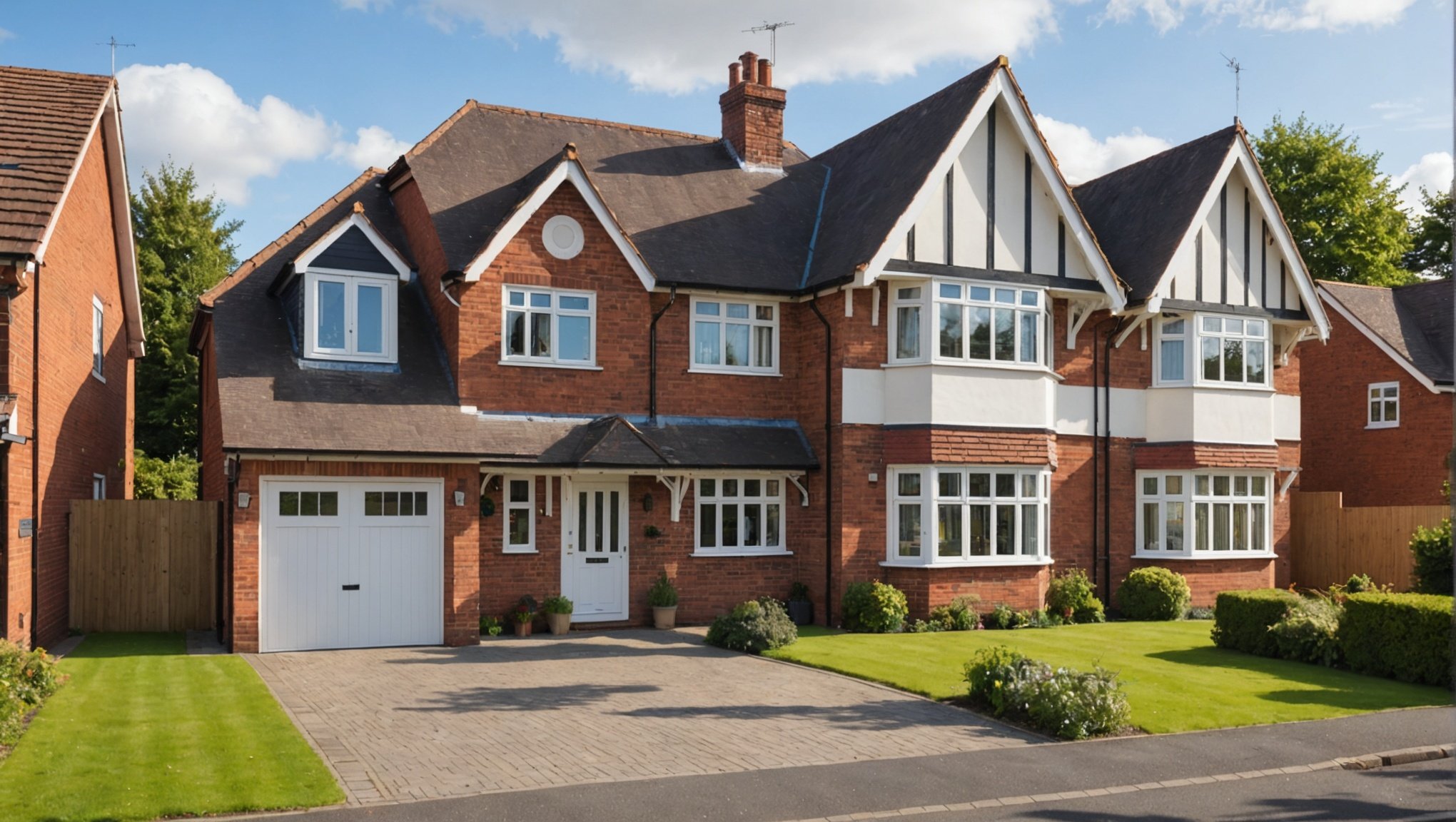Getting a mortgage can be a trying process at the best of times. When the property involved has unusual construction, that process can become even more complex. Across the UK, there is a wide variety of houses built with non-standard materials, from the romantic charm of a timber build to the sleek lines of a steel-framed house. But how does all this affect your mortgage application? Here’s a guide to help you navigate the often tricky waters of securing a mortgage with non-standard construction properties.
Understanding Non-Standard Construction Properties
Before diving into the specifics of mortgages for non-standard construction properties, it is crucial to understand what qualifies as non-standard. Standard construction homes are typically built with brick or stone walls and have a roof made of slate or tile. Anything outside this is considered non-standard. This includes but is not limited to timber-framed houses, steel-framed buildings, thatched roofs and properties made from concrete.
Sujet a lire : Simplify your business: discover accounts receivable automation
Non-standard properties can be wonderful, unique places to live, but they often come with more risk for lenders. This could be due to a variety of factors, such as higher maintenance costs or a potential for decreased resale value. As a result, these quirks and features that make the property unique can also make your mortgage application a bit more challenging.
Requirements for Mortgages on Non-Standard Construction Properties
Just because a property is non-standard does not mean it is impossible to get a mortgage. However, you should expect to meet some additional requirements and possibly face higher costs.
Dans le meme genre : Is it a good time for UK residents to invest in overseas property given the current exchange rates?
First and foremost, you’ll need a thorough valuation. This should be conducted by a surveyor with experience in non-standard properties. They will be able to accurately assess the condition of the property, identifying any potential issues and providing a realistic valuation.
Your credit score also plays a crucial role. Since non-standard properties are often seen as riskier by lenders, having a solid credit history will go a long way in proving you’re a reliable borrower.
Having suitable insurance is also a must. Some non-standard properties may require specialist insurance, which can be more expensive than standard building insurance.
Finally, having a sizeable deposit will work in your favour. The bigger the deposit, the less risk for the lender. This could lead to better mortgage deals and lower interest rates.
Seeking Professional Help: The Role of a Mortgage Broker
Navigating the mortgage landscape can be overwhelming, particularly when dealing with non-standard properties. It might be wise to consider enlisting the help of a mortgage broker.
A broker can guide you through the process, help you understand the requirements of various lenders and find the best mortgage deal for your specific circumstances. They are also well-versed in the intricacies of non-standard property mortgages and can provide invaluable advice and guidance.
Mortgages for Specific Non-Standard Construction Types
Non-standard properties come in all shapes and sizes, and different types can come with their own specific challenges when securing a mortgage. Let’s take a look at some common types of non-standard constructions.
Timber-framed houses are a common type of non-standard construction. Some lenders may be cautious due to concerns about durability and fire risks. However, if the property is in good condition and has been properly maintained, it is entirely possible to secure a mortgage.
Concrete-built properties, particularly those built in the mid-20th century, can be problematic. Some types of concrete used during this period have been found to deteriorate over time. If you’re looking to buy a concrete property, you’ll need a detailed survey to ensure the property is structurally sound.
Lastly, commercial properties also fall under the umbrella of non-standard construction. These can include offices, shops, or mixed-use properties. Securing a mortgage on commercial property can be complex, and you’ll likely need a commercial mortgage rather than a standard residential one.
Remember, the above are just examples. The key to securing a mortgage with a non-standard construction property is understanding the specific challenges your property presents and being prepared to meet them head-on.
Final Thoughts
Securing a mortgage on a non-standard construction property in the UK can be a challenge, but it is not insurmountable. With careful planning, the right advice, and a solid understanding of what is involved, you can navigate the process successfully. Remember, what makes your property unique is also what makes it special. Therefore, even though the mortgage process may be more complex, the reward is a home that is uniquely yours.
Bridging Loans: A Possible Solution for Uninhabitable Properties
One unique aspect of non-standard property mortgages, especially if the property in question is uninhabitable, is the possible necessity of a bridging loan.
A bridging loan is a type of short-term finance designed to ‘bridge’ the gap between buying a new property and selling an existing one, or in this case, financing the renovation or repair of an uninhabitable property. These loans can provide significant funds quickly, usually within a few weeks, unlike traditional mortgages which can take months to be approved.
In the context of non-standard construction properties, bridging loans can be particularly beneficial. For instance, if a property is deemed uninhabitable due to structural issues or severe disrepair, a mortgage lender may be unwilling to approve a mortgage. A bridging loan, however, could provide the necessary funds to make the property habitable again.
Once the property is considered habitable, securing a mortgage should be significantly easier. However, it is essential to ensure you have a clear exit strategy in place before taking on a bridging loan, such as having a mortgage approval in principle, as they require repayment within a set period, usually 12 months.
The Impact of Bad Credit and Semi-Commercial Properties on Obtaining a Mortgage
Non-standard properties are not the only factor that can complicate a mortgage application. Other elements such as a bad credit history or the nature of the property being semi-commercial can also influence mortgage approval.
Typically, mortgage lenders prefer borrowers with a good credit history as it indicates a lower risk of defaulting on repayments. Mortgage lenders are likely to be even more cautious if you’re applying for a mortgage on a non-standard construction property and have a bad credit history. However, this doesn’t mean obtaining a mortgage is impossible. Some lenders will consider mitigating factors such as a larger deposit or a solid income.
On the other hand, semi-commercial properties, such as live-work units or properties with a shop on the ground floor and living accommodation above, can also present additional challenges. Compared to standard residential properties, semi-commercial properties often require a different type of mortgage, known as a commercial mortgage. Commercial mortgages are typically more complex and can be more expensive than residential mortgages. However, with the right advice and planning, it is possible to secure a mortgage on a semi-commercial property.
Conclusion: Navigating the World of Non-Standard Mortgages
Non-standard construction properties pose unique challenges when it comes to securing a mortgage. Whether it’s a timber-framed house or a semi-commercial property, each type of non-standard construction has its own set of considerations and requirements.
However, understanding these challenges and seeking professional advice can significantly ease the process. A mortgage broker can provide invaluable guidance, making the journey less overwhelming and more manageable. They can offer the best mortgage advice, help you understand the complexities of different types of mortgages such as bridging loans, and guide you towards the best mortgage deals.
While the process may seem daunting, it’s important to remember that what makes your property unique also makes it special. With thorough planning and the right advice, securing a mortgage on a non-standard construction property is entirely achievable. After all, the end goal is a home that is not just a place to live, but a reflection of your individuality and style.











